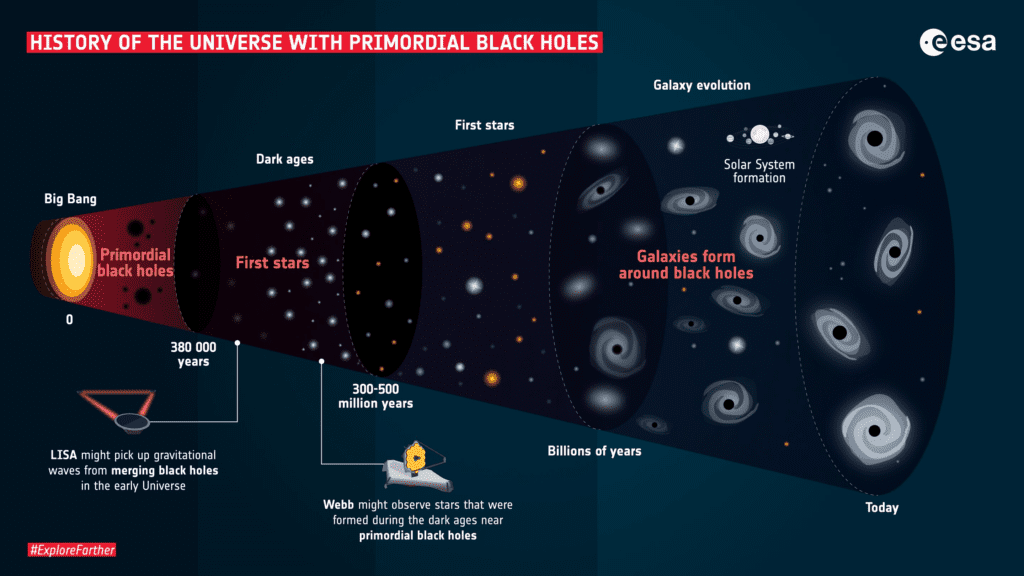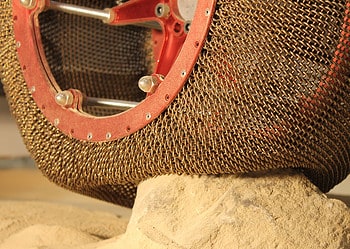We still don’t know how the first black holes formed — or when they formed. To have gotten as big as they seem to be today, they may have emerged right after the universe was formed, a new study concludes.

Black holes are quite possibly the most fascinating objects in the universe. They’re objects (technically, regions of spacetime) so massive that their gravitational fields don’t allow anything, not even particles or light to escape. Black holes are intriguing for a number of reasons — for starters, they’re so extreme they test our very understanding of physics, and they shape the planets, stars, and galaxies around them. Some have even speculated that our universe may have been born out of a black hole, and while there’s a fair bit of speculation to that idea, it just goes to show how little we truly understand about these objects.
But when exactly did black holes first form?
Black everything
The early days of the universe were a hot mess — quite literally. After the Big Bang, the universe was basically a hot soup of particles, and only when it cooled down a bit could the particles (protons and neutrons) form the first hydrogen atoms. It would be a few hundred million years after the big bang, however, that the first stars formed, but when exactly these stars formed is still a mystery, and the same can be said of black holes.
Black holes usually form from the remnants of a large star that dies in a supernova explosion. The oldest black hole we know of is 13.80 billion years old, forming just 690 million years after the big bang. It’s also a massive black hole, at 800 million times the mass of the Sun.
This is puzzling. How did a black hole so massive form so early in the universe, what did it form from? Plus, it’s unlikely that we found the oldest black hole, there are possibly even older ones out there, and our current understanding of the universe struggles to explain something like that. Meanwhile, on the other end of the scale, there could be some small early black holes (as highlighted by observations from ESA’s Gaia). These black holes seem too small to have formed from stars, so how did they form exactly?
“Black holes of different sizes are still a mystery. We don’t understand how supermassive black holes could have grown so huge in the relatively short time available since the Universe existed,” explains Günther Hasinger, the author of a recent study on the early days of black holes.
Hasinger and colleagues believe that these dilemmas can be explained through so-called ‘primordial black holes’, and these black holes could themselves be the as-of-yet unexplained dark matter.
“Our study shows that without introducing new particles or new physics, we can solve mysteries of modern cosmology from the nature of dark matter itself to the origin of supermassive black holes,” says Nico Cappelluti.
If these primordial black holes formed immediately after the Big Bang, they emerged from some regions of space that were dense enough to undergo gravitational collapse. These black holes would have swallowed gas and other stars, growing and merging to become the supermassive black holes we see today at the center of galaxies. Small black holes would simply be primordial black holes that have not merged with others.
However, the experimental data isn’t there to confirm this model — yet. These early black hole mergers would have produced a signal, and The European Space Agency’s future gravitational wave space observatory, LISA, might pick up the signals.
The recently launched James Webb Space Telescope could also find telltale signs of these primordial black hole mergers.
“If the first stars and galaxies already formed in the so-called ‘dark ages’, Webb should be able to see evidence of them,” adds Hasinger.
Journal Reference: “Exploring the high-redshift PBH-ΛCDM Universe: early black hole seeding, the first stars and cosmic radiation backgrounds,” by N. Cappelluti, G. Hasinger and P. Natarajan, The Astrophysical Journal.






